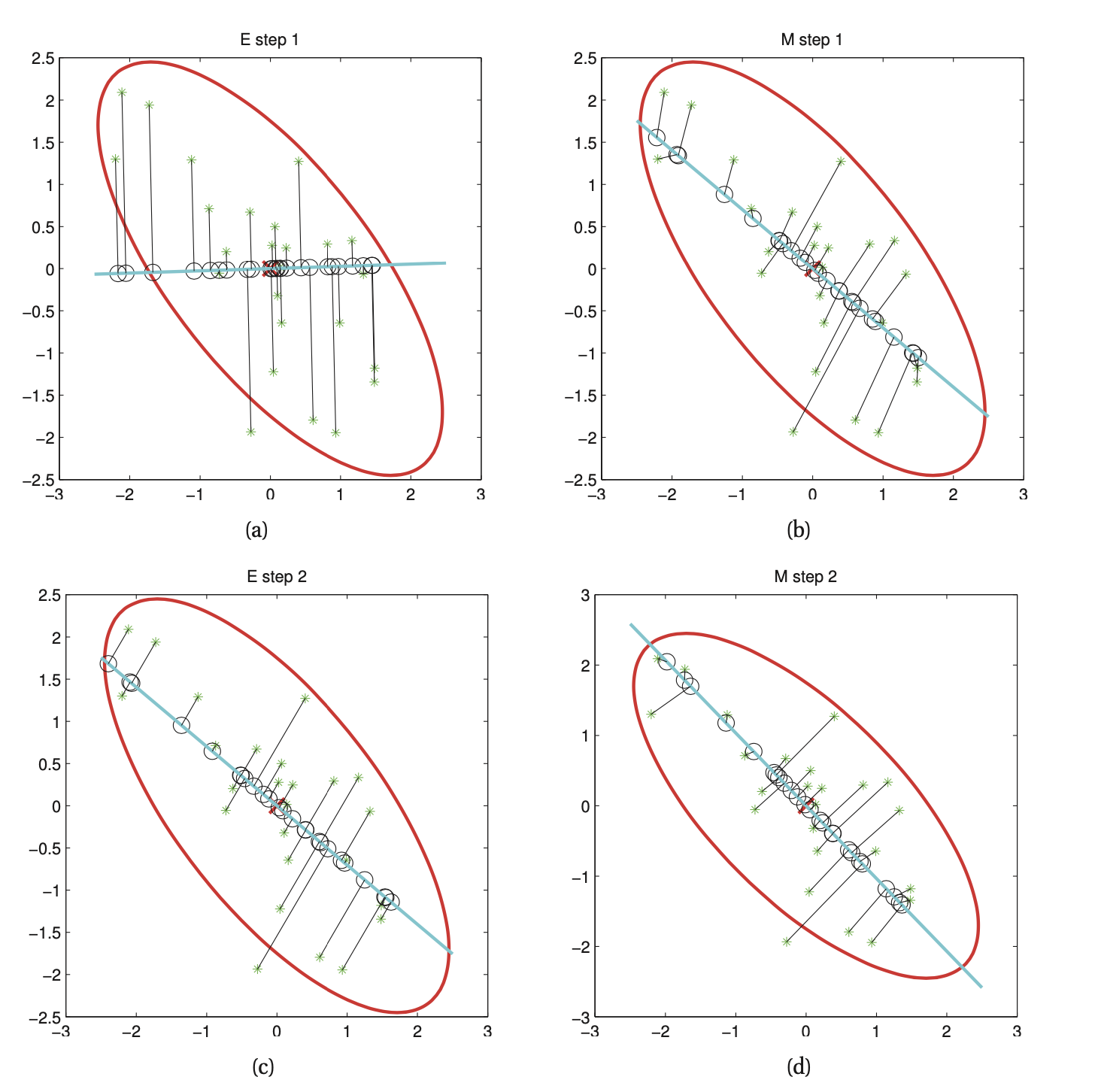EM For PPCA¶
This is an expectation maximization algorithm for Probabilistic PCA but it works in the limit \(\sigma^2 \rightarrow 0\)
Let \(\tilde{Z}_{L \times N}\) matrix storing the posterior means alog ints columns. And let \(\tilde{X} = X^T\) store the original data along its columns.
The Physical analogy can be explained as:

Here we can view starts as points an the black line as a string connected to a rod. In the E step, we hold the rod fixed, and let the attachment points slide around so as to minimize the spring energy (which is proportional to the sum of squared residuals). In the M step, we hold the attachment points fixed and let the rod rotate so as to minimize the spring energy.
Advantages of EM for PCA¶
Can be faster
Can be implemented online fashion
Can handle missing points
We can modify it to perform variational EM or variational Bayes EM.
